When you start off wearing and using night vision the world becomes bright and you can see in the dark. You begin to see the world in a whole new light. However, as you start to use them more and more there are some issues. Just like camera lenses, the use of filters can help you control the light coming into your NODs or control the light coming out of your NODs. Welcome to the NVG filtered life.
Day Filter

Every night vision device has or should have a day filter. While it is mainly a protective slip fit cap, it does work as a filter by limiting how much light is entered into the objective lens and intensifier tubes. The day filter is an old photography trick, it is essentially a pinhole like what you see on pinhole cameras. The pinhole actually performs two functions. The primary function is the limit the amount of light entering the front and protecting the image intensifier from burning out from exposure to sunlight. The secondary function is a sort of refocusing device. Pinhole cameras have a tremendous depth of field. See the photo below. This is the inside of a cello. The depth of field was achieved using the smallest of apertures like a pinhole and a fisheye lens.
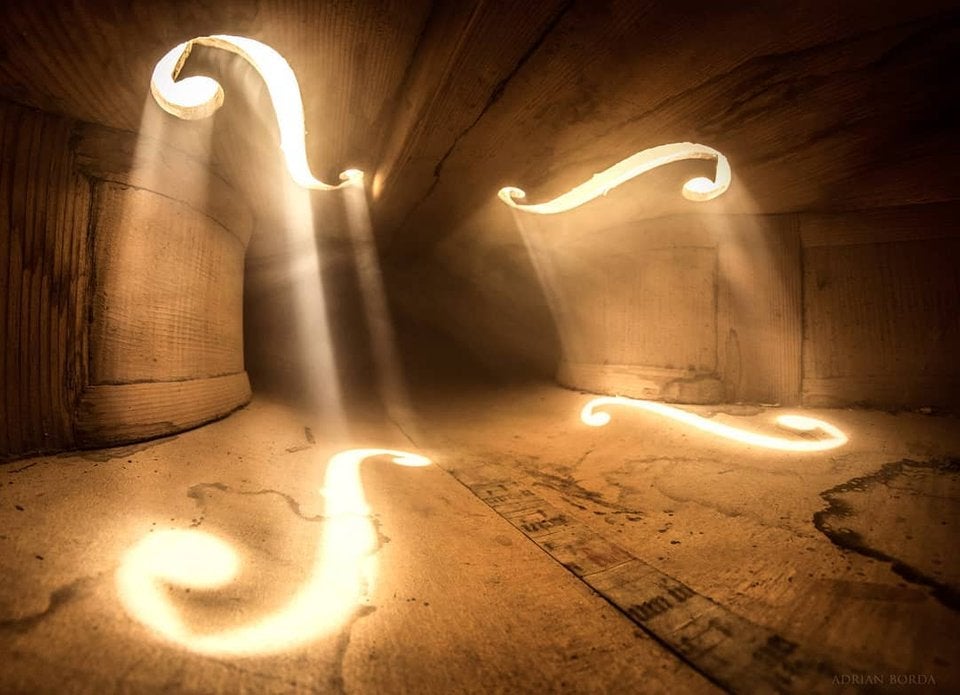
Photo credit: Adrian Borda
The objective lenses of NODs, like the PVS-14, have an extremely short depth of field. If you have ever used night vision you would have noticed that if you focus the front lens out to infinity everything within a couple feet of you is out of focus. While you can certainly rack focus on the objective lens, the day filter will make everything in focus. There is a cost to this improved depth of field and that is the cost of light. You need a lot more light to use this filter. Using it at night will almost always require additional lighting typically you would use the onboard IR illuminator or a helmet mounted light.
NVG Filtered L.I.F.
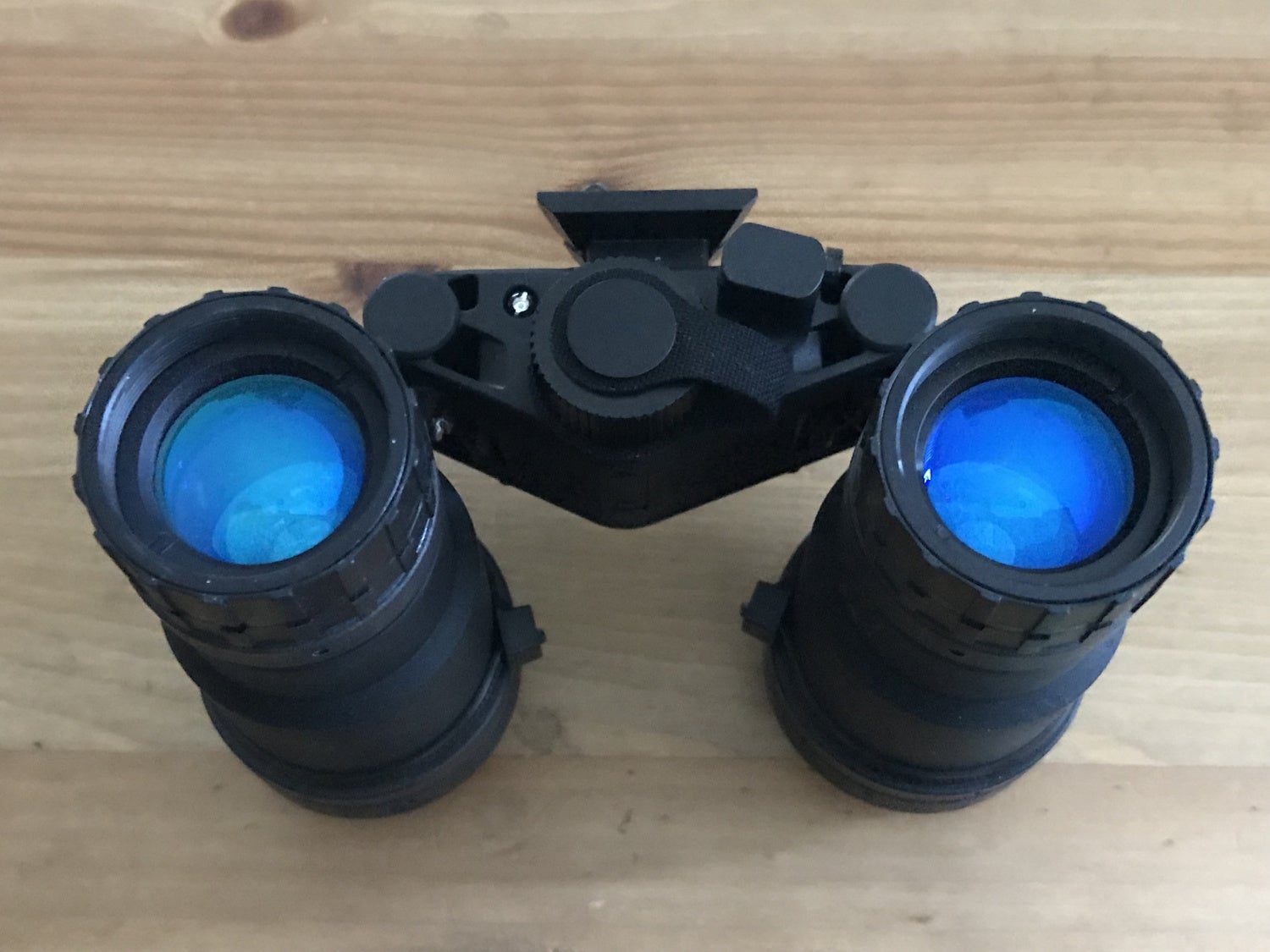
Unfiltered. The blue tint is an anti-reflective coating.

NVG Filtered with LIF.
The second most common filter is the L.I.F. or Light Interference Filter. These were used by the military to block out extremely powerful green lasers typically used on targeting systems like on tanks. These high powered green lasers could damage the image intensifying tube inside your NODs. The LIF blocks out a specific wavelength that green lasers produce.
There is a little interesting history behind the LIF as told to me by my friend Paul S. They were originally designed by ITT who then sent the design to Qoptiq in Singapore for final production. Not sure why an American company would outsource night vision components to overseas manufacturing but I suppose this was early days in night vision history. Somehow the LIF design got leaked from Qoptiq and ended up in the hands of the Chinese. According to Paul, this is why the original ITT no longer exists and intensifier tube production was sold to Exelis. The U.S. government fined ITT somewhere between $20 million to $100 million which started ITT’s downfall.
As I said, the LIF blocks out green light, specifically the green wavelength produced by green lasers. If you recall, certain ANVIS lenses have coatings that act like LIF.
Since the LIF blocks out green there is a little DIY hack that can make your green phosphor night vision look sort of like white phosphor. Just put the LIF on the rear eyepiece. The front objective lens and rear eyepieces of most common night vision devices have the same thread pitch so you can put a filter on either side.

Unfiltered rear eyepieces

LIF installed on the rear eyepieces.
The LIF blocks out the green from a green phosphor image intensifying tube making the image look black and white.
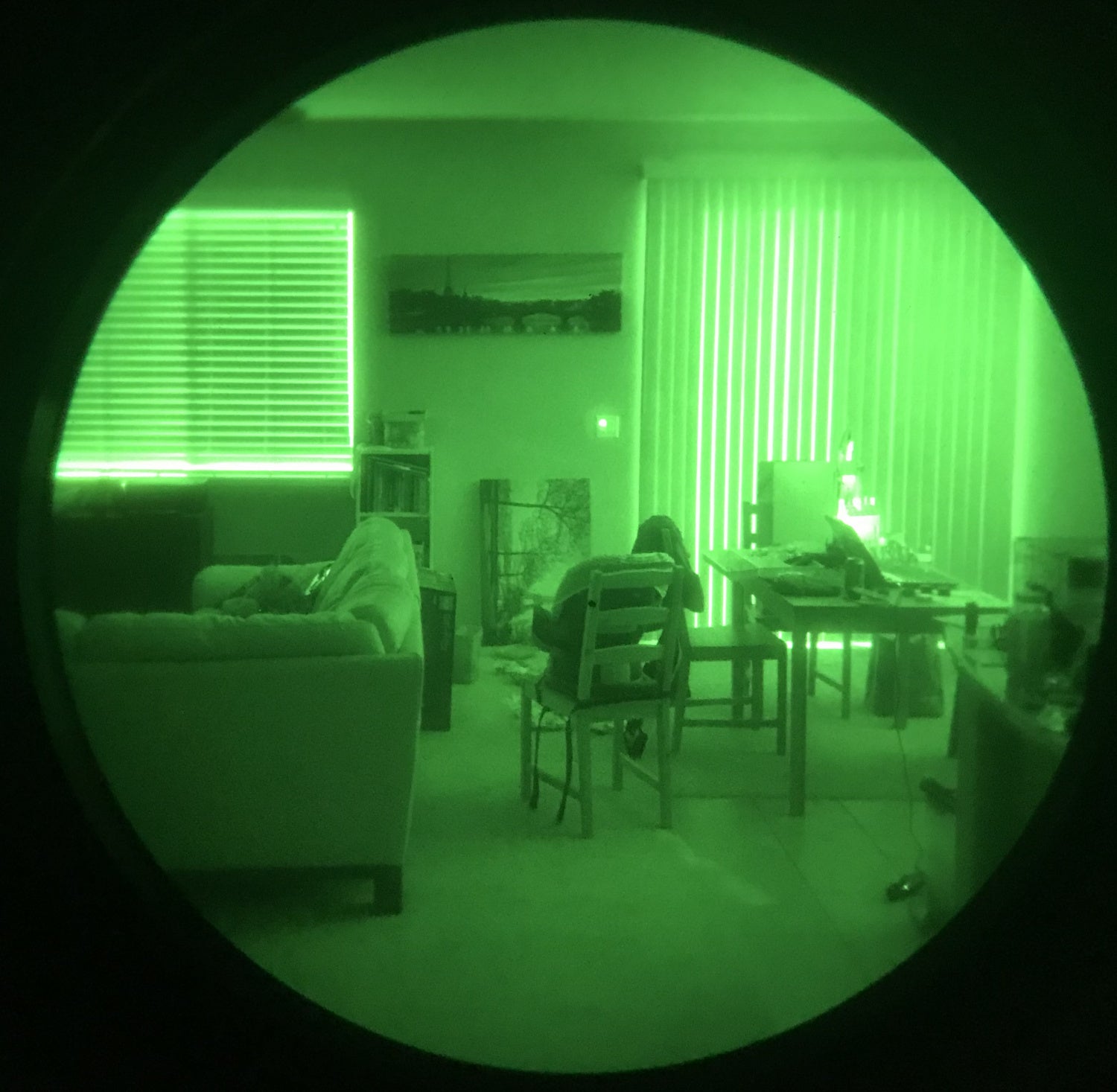
Unfiltered Harris ITT Exelis tube

LIF filtered Harris ITT Exelis tube.
It is not quite the same but it is the closest thing to the white phosphor. Here is what white phosphor looks like.
Amber NVG Filters
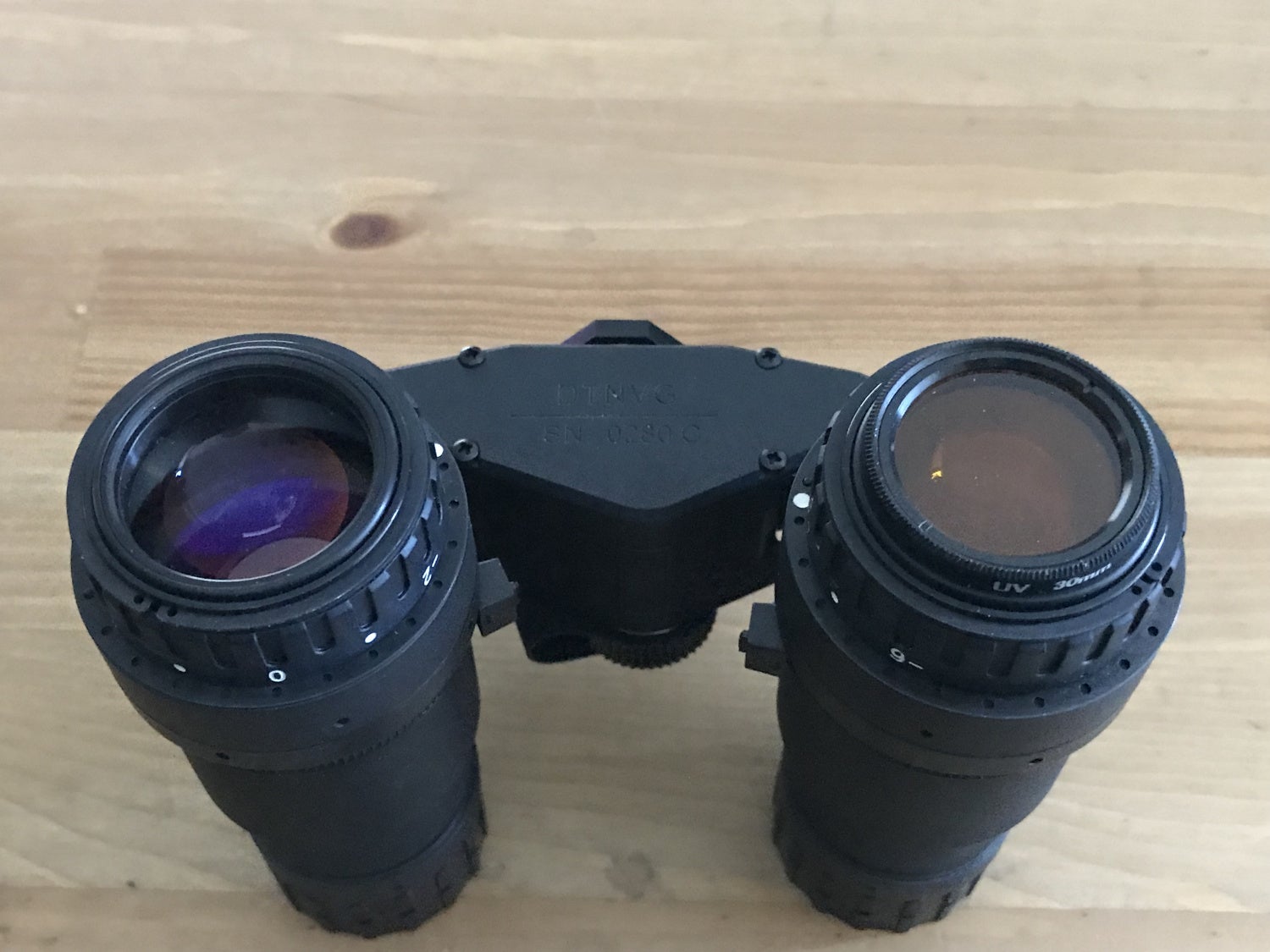
Amber filter installed on the right eyepiece.
Why would you want to filter out the green from your green phosphor tube? Well, it looks better but that is subjective. Using green night vision for extended periods of time can cause an effect to your eyes. The saturation of green light for extended periods of time will have you seeing pink. Gen 3 green phosphor looks more like a yellow-green and it can take a couple of hours of constant use before you start seeing pink. I noticed my Gen2+ Photonis green phosphor tubes are more green than Gen 3 Harris or L3 tubes and they have my eyes seeing pink just after several minutes of use.
Remember those optical illusions where you stare at a photo for a while? It is sort of like that. These are called afterimage optical illusions.
So according to Professor Freeman, the green of night vision will tire out the green cones of your eyes causing you to see pink.
One way to alleviate this is with the use of an amber filter. Wilcox makes an amber filter but they have a different reasoning behind their usage. They reduce the amount of backsplash on your eyes.
The Wilcox Filter Assemblies are drop-in replacements for the standard eye cups featured on some of the most popular Night Vision Devices. These filters feature an amber-tinted, Wavelength-Controlled Polycarbonate lens that effectively cancels out most of the green light backsplash that occurs when NVG’s are used. The green light spill is an unavoidable trait in all night vision and can compromise the location of the operator, especially in open terrain where light can travel for great distance. The filter’s lens is framed with a matte black rubber pad that helps protect the user’s eye socket from impact during high intensity operations and securely pops onto the back of the NVG.
The Achilles heel of night vision operation has always been the green back splash of light on the operator’s face. While not the same as a spot light, the green spill is definitely noticeable and can compromise your position, especially in wide open desert terrain. This effect is doubled when using binocular style NVD’s. When stealth is a concern (and let’s face it: stealth is always a concern), we can think of no more important accessory for your night vision optics than the Wilcox Filter Assembly.
If you recall, the PVS-21s that I got a chance to look at, have dark ruby filters covering the see-through windows. This is so that green light, from the tube image, that splashes over your eyes cannot be seen by your opponents. Thus giving away your position. Here is a photo of PVS-21s without those filters.

Ops-Core makes an eye shield that can filter out the green glow of night vision. Their snap shield act as eye pro while the red plastic filters out the green light on your face.


Filter Out The Noise
A rather recent development in NVG filters are the Signal Noise Blocking (SNB) filters by Sure Shot Night Vision.

The SNB Filter helps to smoothen out the image you see in night vision. When you use night vision in low ambient light, the image intensifier tube starts to scintillate.
According to US Night Vision:
Scintillation: A faint, random, sparkling effect throughout the image area. Scintillation, sometimes called “video noise,” is a normal characteristic of microchannel plate image intensifiers and is more pronounced under low-light conditions. Do not confuse scintillation with emission points.
While the SNB filter does make the image smoother looking, I noticed it does reduce the amount of light coming into my eye making my night vision look darker. This is a personal preference of mine. I rather have the noise just so I can see more at night.

SNB Filter installed
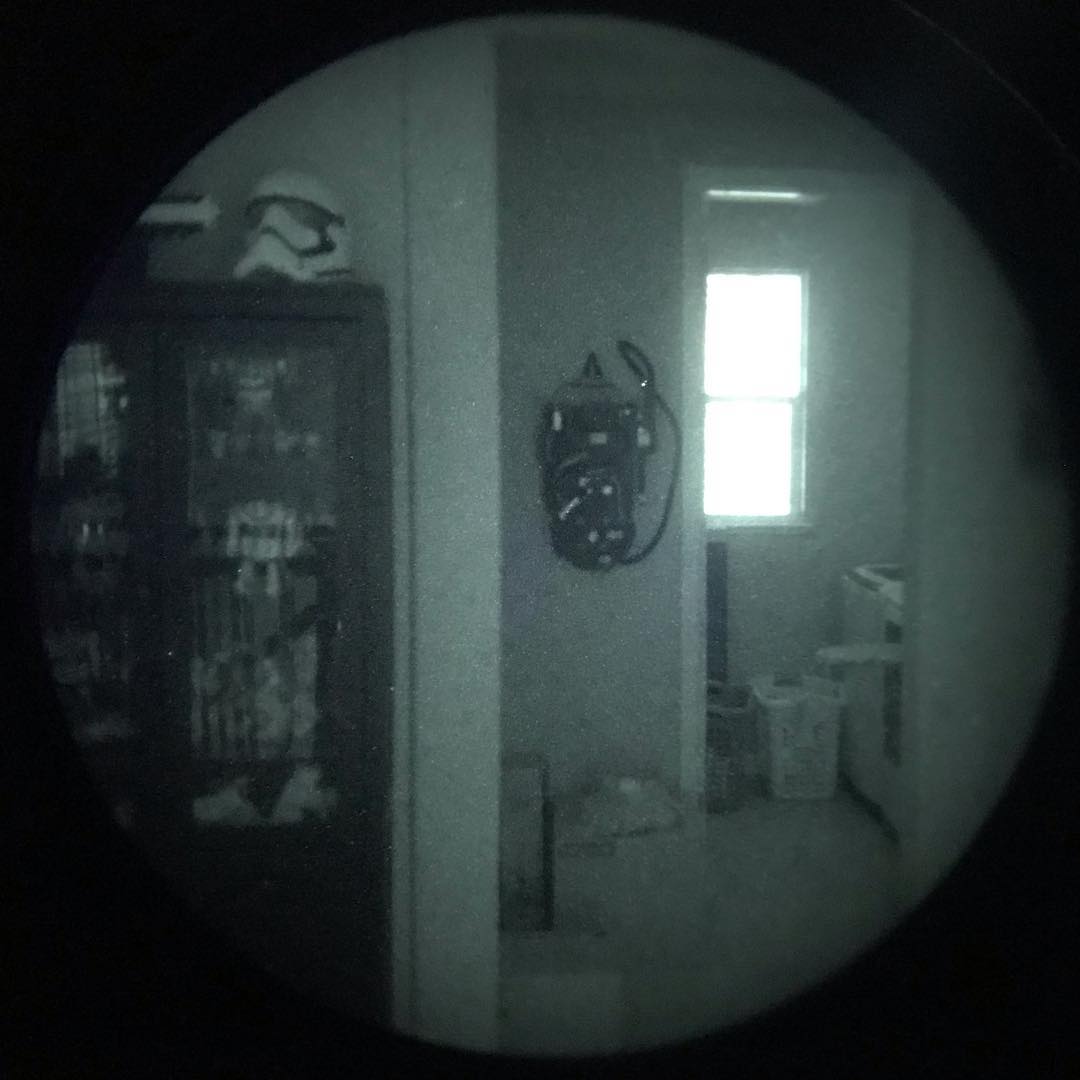
unfiltered white phosphor in my ANVIS9
Here are before and after images of what I can see unfiltered versus using the SNB filter.

SNB filter installed on ANVIS9
Interestingly you can see detail in the window. It has a cling film decal and you can see it with the SNB filter but the rest of the image is darker.
The SNB filter is supposed to help with lower light environments so I went to my garage at night. Other than a couple of small LEDs from various devices inside this room is extremely dark. Take a look at the two images before and after the SNB filter. With the SNB filter, I can hardly see anything requiring me to use an IR illuminator.


Here are my Gen 2 Photonis tubes in an ANVIS housing.
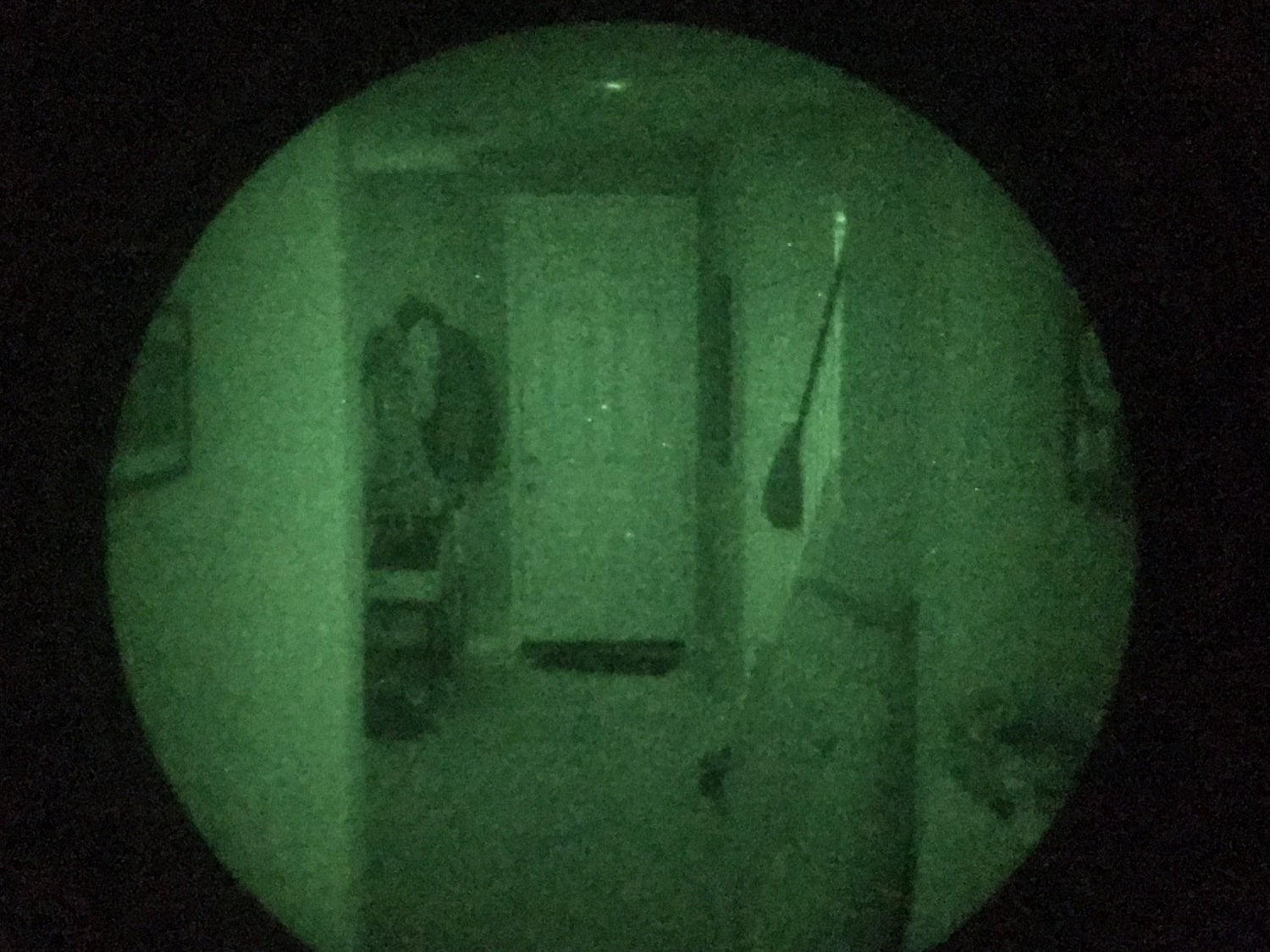
Gen 2 Photonis with the SNB Filter

Gen 2 Photonis unfiltered
Here the SNB filter actually helped the image. It does reduce the amount of light but it makes the image just a little more clear than without it.
Other users of the SNB filter have had better results than me. @Chisam128 clearly shows the SNB filters in a positive light.
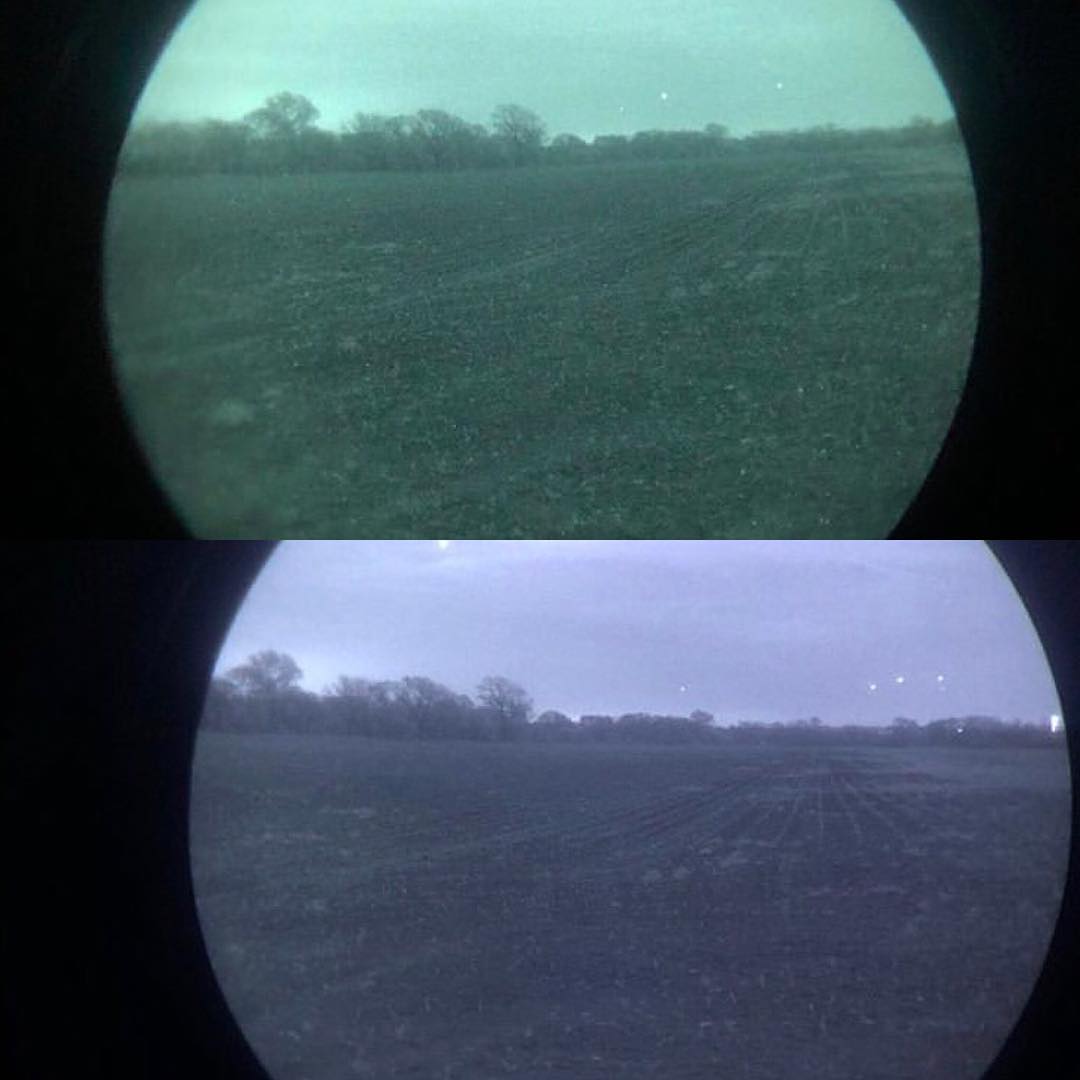
This photo of the truck really shows the reduction of noise.

According to Sure Shot Nightvision, their SNB filter can also be used with certain thermal systems.
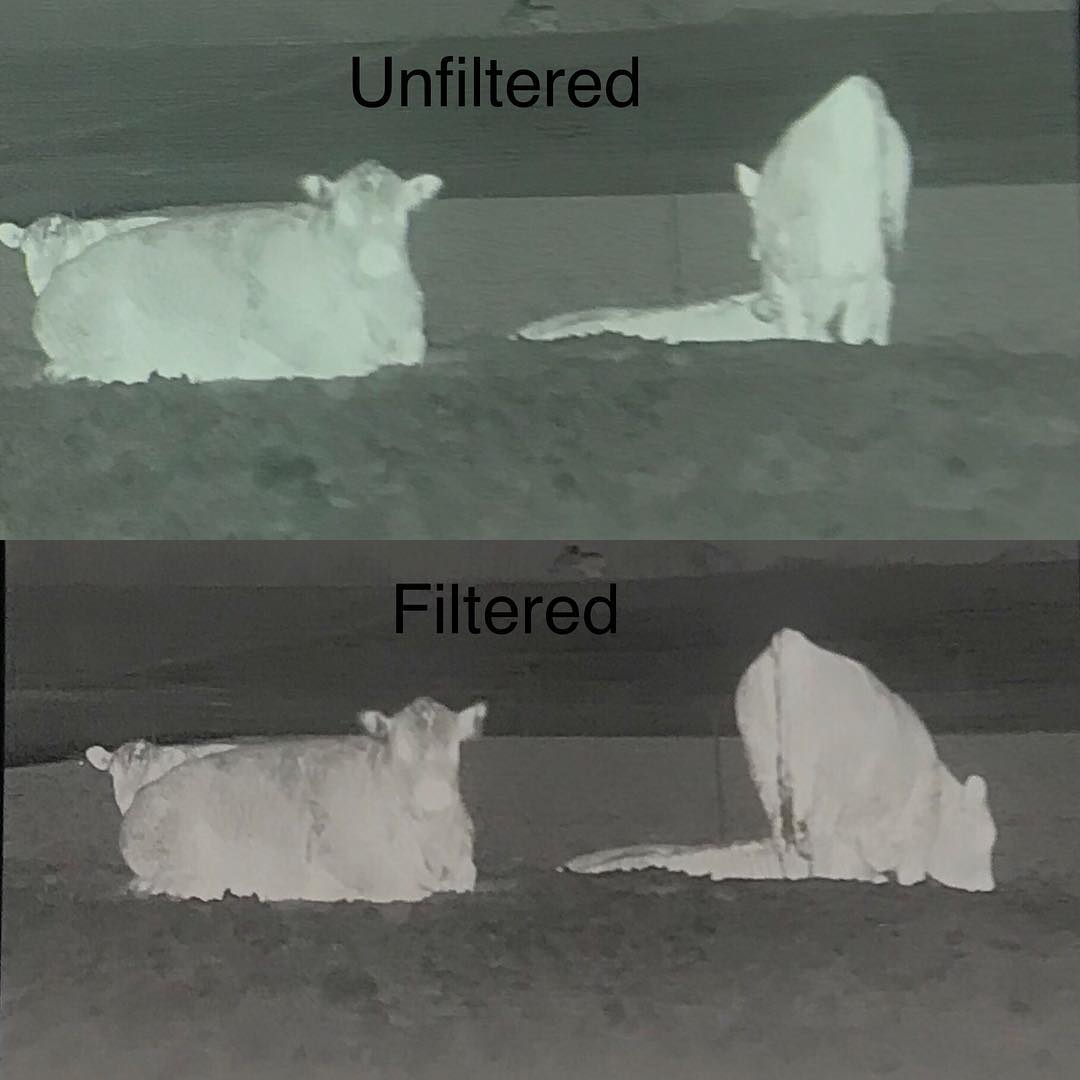
NVG Filters for Astronomy

Photo credit Gavin Orpin. Monkeyhead nebula – iso 200, 10 second exposure, Samsung s9

Photo credit Gavin Orpin. Needle Galaxy, iso 50, 10 second exposure, Samsung s9
Astronomers actually use night vision to help look up at the stars. These guys really take filters to the next level. I won’t even begin to try and understand what they are talking about. Just know that the use of certain filters can help block light pollution from the city and some filters help you to see gas nebulae.
What is the spectrum curve of the image intensifier?
What is the goal of filtering? Is it to block unwanted spectra or increase signal to noise on objects at certain emission lines or combination of both?
What is the spectrum curve of the unwanted source when blocking?
What is the full spectrum curves of the filter? Is it in a useful range relating to spectrum of device output and useful to emission of astronomical object viewed?
The most common Gen 3 devices we see in the forum here (BIPH, Collins I3, NVD Micro, PVS-7 or similar device, use a GaAs photocathode with P43 (green) phosphor.
The tube similar in design to this – http://www.photonics…8/Figure4_6.jpg
The range of response of GaAs photocathodes can be seen here – http://www.ceoptics….ages/chart1.gif
The stuff we want to block includes the contributors to skyglow – http://www.prairieas…glow800x600.jpg
Light pollution being one of the major spectra in its various wavelengths – http://micro.magnet….rcesfigure3.jpg
Also the moon is an object contributing to unwanted light sources and spectrum emission looks like this – https://chakraborti….04/824_1-f1.jpg
So, the final thing we definitely should look at is composition of gases in nebulae, star emission for various star types, galaxy emission and visible spectra. These can vary greatly.
If you look at the spectrum of various vision types with the human eye, we see that night vision (dark adapted scotopic) is generally how visual filters are made to enhance the compositional gases in nebula in the visual range – http://www.mdpi.com/…3961f3-1024.png
Most visual filters in narrowband enhance emission lines in OIII, H-Beta, while blocking other sources up to some emissions in near IR or H-Alpha and up because we do not see red with scotopic vision
The trick to get filters that work for Gen 3 GaAs tube devices is to tailor the filter to best response of photocathode, best blocking of unwanted spectra, and best emission of gases or spectra of objects.
End of first post. I can contribute to information on thefollowing filters I use with NV astronomy:
3nm Ha
7nm Ha
610nm Longpass
Lumicon Night Sky H-Alpha – this is a 640nm Longpass actually
35nm Ha
685nm IR pass
I have tried some visual filters
Thousand Oaks LP2
Lumicon UHC
Lumicon OIII
Baader Moon & Skyglow Neodymium
Lumicon ND13
All visual filters were ineffective on Gen 3 GaAs devices with exception of the Baader M&SG Neodymium which cut LP a little to darken view. The other filters listed at top that I use with NV Astronomy are all effective to varying degrees and I can list objects and uses for each in next post.
Conclusion
The use of filters can enhance your experience with night vision but it is a very subjective experience. I prefer not to use filters unless I am looking at the stars at night. My ANVIS9 lenses have coatings that make it nicer to look at stars compared to using a regular night vision device that uses PVS-14 objectives. I can see how filtering out the green splash on your eye socket would be important for the purposes of stealth at night but I prefer to not have anything restrict the amount of light coming into my eyeballs.
 Your Privacy Choices
Your Privacy Choices
